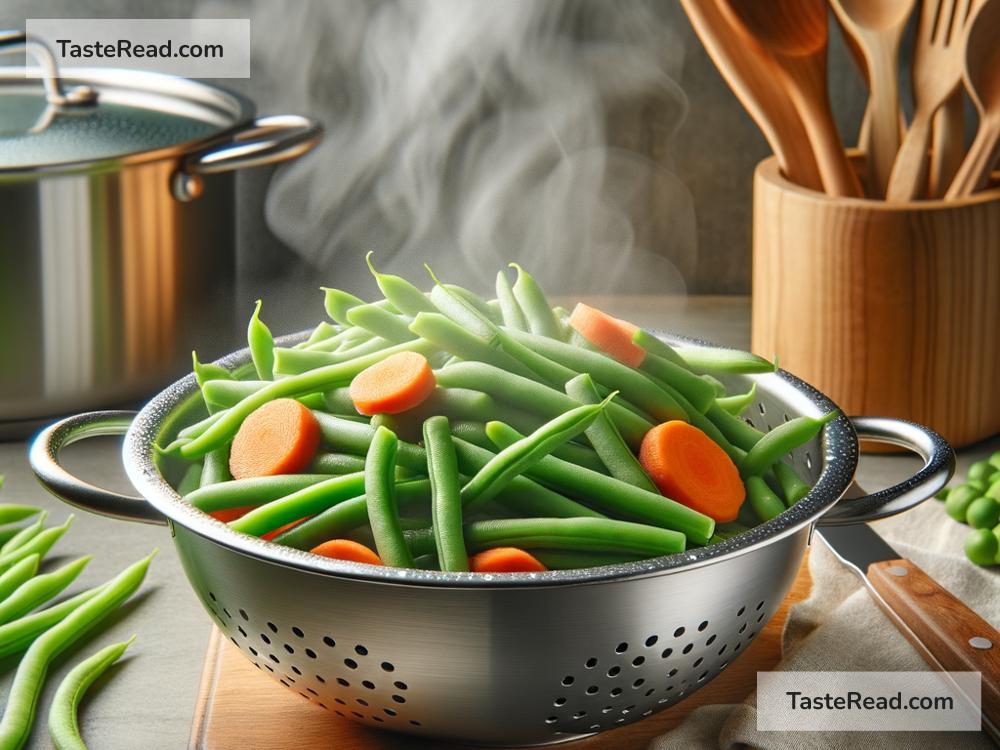How Blanching Preserves the Flavor of Vegetables
Have you ever noticed how vegetables can lose their vibrant color, fresh taste, and nutrients when placed in the freezer or cooked for too long? If you’ve wondered if there’s a way to keep vegetables tasting fresh, flavorful, and packed with goodness, then blanching is the secret you’re looking for. It’s a cooking technique used worldwide by home cooks and chefs alike to preserve vegetables’ taste and quality. But what is blanching, how does it work, and why is it so effective? Let’s explore this simple yet powerful method.
What is Blanching?
Blanching is a food preparation method where vegetables are briefly boiled in water or steamed, then quickly cooled in ice water. The process is straightforward and involves three key steps:
-
Boil or steam: Vegetables are placed in boiling water or steamed for a short amount of time—usually just a few minutes.
-
Cool rapidly: After blanching, the vegetables are immediately transferred to a bowl of ice water to stop the cooking process.
-
Drain and dry: Once cooled, the vegetables are drained and dried completely, ready for storage, freezing, or cooking.
Although the process is quick and easy, blanching plays a huge role in preserving the flavor, texture, and nutritional value of vegetables.
How Does Blanching Preserve Flavor?
Blanching works like a protective shield for your vegetables. Here’s how it helps vegetables stay fresh and delicious:
1. Stops Enzymatic Action
Fresh vegetables contain natural enzymes that control ripening and aging. In storage, even in the freezer, these enzymes continue to work, leading to changes in texture, color, and flavor over time. Carrots may taste less sweet, peas may lose their bright green hue, and broccoli may turn bitter or mushy.
Blanching halts these enzymes by briefly heating the vegetables. Essentially, the boiling water or steam “turns off” the enzymes, stopping the aging process and ensuring the vegetables maintain their fresh, peak flavor for longer.
2. Enhances Natural Flavor
When vegetables are blanched, their natural flavors intensify. Think of blanching as unlocking the potential of the vegetable. For example, broccoli becomes sweeter and less bitter, green beans taste crisper, and asparagus develops its signature earthy yet bright flavor. Blanching brings out the best taste while retaining its fresh feel.
3. Preserves Nutrients
It’s easy to overcook vegetables and accidentally drain them of their nutrients and flavor. Prolonged cooking breaks down vitamins like vitamin C and B-vitamins, which are essential for our health. Blanching, however, involves minimal cooking. Since the boiling or steaming is brief, the nutrients are mostly preserved. Additionally, blanching can remove gritty dirt or microorganisms from vegetables, making them cleaner and safer to eat.
4. Locks in Color
You’ve probably noticed how vegetables look dull and pale after freezing or improper storage. Blanching fixes this problem by locking in color. The short boiling period causes pigments in the vegetables to “set,” keeping their bright shades intact. For instance, green vegetables like spinach or peas look greener after blanching, and orange vegetables like carrots retain their vibrant glow. A colorful vegetable is not only appealing but often reflects great flavor and freshness.
When Should You Blanch?
Blanching is particularly useful for vegetables you want to freeze or prepare ahead. Some examples include broccoli, cauliflower, spinach, peas, kale, asparagus, carrots, and green beans. Frozen vegetables retain their flavor better when blanched first because the enzymes no longer cause spoilage or flavor changes during freezing.
If you’re meal prepping, blanching helps make vegetables more manageable. For example, blanched spinach can be chopped and frozen for smoothies, soups, or stir-fries. Blanched carrots can be stored for roasting later without losing their signature sweetness.
How to Blanch Vegetables at Home
Blanching may sound fancy, but it’s simple to do in your kitchen. Here’s how:
-
Prep your vegetables: Wash and chop vegetables into bite-sized pieces or as needed. For example, peel carrots or cut broccoli into florets.
-
Boil water: Bring a large pot of water to a rolling boil. For steaming, set up a steamer over boiling water.
-
Blanch: Drop the vegetables into the boiling water for 1-5 minutes, depending on the type and size. Green beans, peas, and spinach need just 1-2 minutes, while harder vegetables like carrots may need closer to 4 minutes.
-
Cool quickly: Remove the vegetables and immediately transfer them to ice-cold water. Let them sit for about the same amount of time they were in the boiling water.
-
Drain and store: Once cooled, drain the vegetables well and use them in your recipes or freeze them for later.
Final Thoughts
Blanching is more than just a cooking technique—it’s a way to protect and preserve the natural goodness of vegetables. By halting enzymes, enhancing flavor, preserving nutrients, and locking in color, blanching makes it easy to enjoy fresh-tasting vegetables year-round. Whether you’re meal prepping, freezing veggies, or simply elevating your cooking, this simple method is worth mastering.
So the next time you have fresh produce you want to save or prep, try blanching. It’s quick, effective, and ensures your vegetables stay as delicious as the day you picked them!

